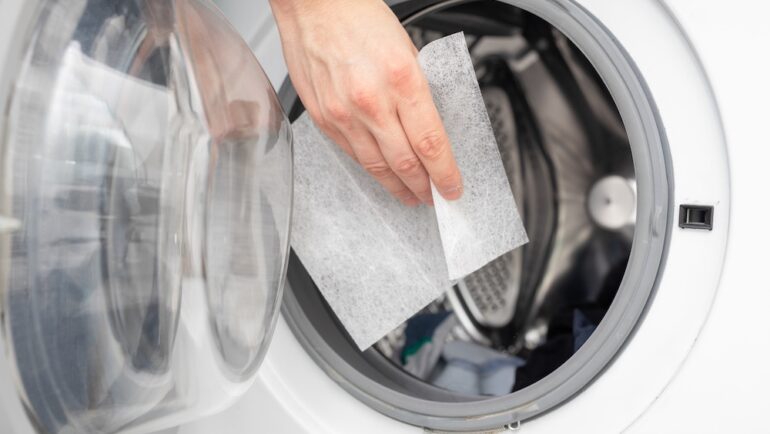Dryer sheets soften laundry and leave a delightful, comforting scent. However, they can also damage some items in the long run, so read on for tips on using them safely.
How sheets work
Dryer sheets are composed of fibers coated with a pleasantly scented fabric softener. In the heat of the clothes dryer, the coating melts and deposits on your clothing and linens during the tumbling process, softening the fabrics. The softener also diminishes electrostatic cling by insulating the fibers from conductivity.
With consistent use of these sheets, the softener builds up a permanent residue on your laundry that can affect how fabrics deal with moisture. The same effect can occur when fabric softeners are regularly used during the wash cycle.
Here are some possible harmful effects of dryer sheets, followed by alternative solutions.
- The buildup of softener residue on fibers can gradually diminish the ability of bath towels, washcloths, and kitchen towels to absorb water.
- The moisture-wicking capabilities of athletic wear and socks can be diminished over time.
- Microfiber rags may lose their cleaning capability.
- A safety issue develops as softener diminishes the flame retardant in clothing such as children’s pajamas.
- The dryer sheet coating may also adhere to the lint trap filter, coating the screen. Over time, it can become more challenging to peel collected lint off during cleaning.
Alternatives to dryer sheets and fabric softeners
Fortunately, there are simple alternatives to fiber-coating softener sheets.
- Tennis ball-size wool balls have become the rage. They don’t soften laundry but help it dry faster, reducing its exposure to high heat.
- Roll up a tight ball of aluminum foil about the size of a tennis ball and toss it in the dryer. This helps reduce static cling in your clothing.
- Add 1/4 cup baking soda instead of fabric softener to the wash for that luxurious comfort.
- You can occasionally use white vinegar to soften, especially with whites, but limit its usage because vinegar can wear down the rubber seals in your washing machine.
Related – Does Your Clothes Dryer Have the Doldrums?


